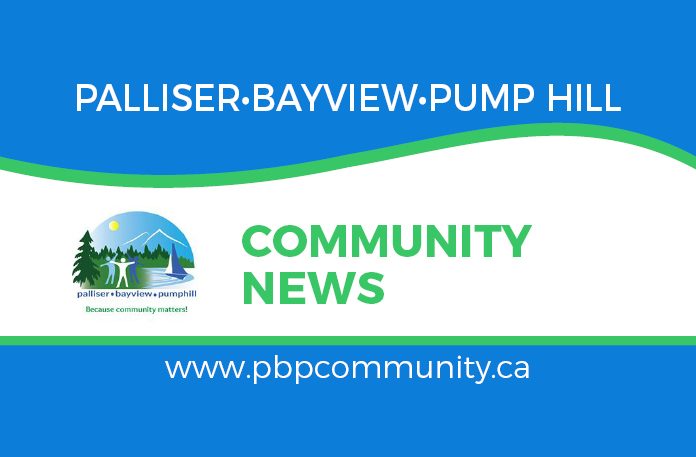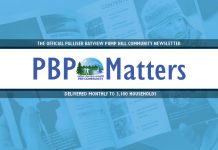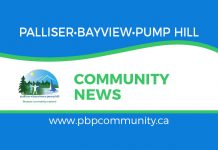by Lesley Farrar
In times of crisis, we safeguard what matters most. Over the past summer, as nearly 100 days of water restrictions reminded us of the fragility of Calgary’s resources, it became clearer than ever that our parklands and drinking water deserve the highest levels of oversight and protection. These are essential elements of our city’s identity and survival.
The Glenmore Landing Redevelopment process has raised alarms about transparency, procedural fairness, and the prioritization of long-term community interests. Suspicion and allegations of misinformation have persisted, leaving many to question whether Calgary’s planning processes are serving the public good. The Palliser Bayview Pumphill Community Association (PBPCA) has taken up the mantle to champion a simple yet critical call to action: Do the studies, share the studies, uphold procedural fairness.
Do the Studies
Before any development can be considered near the Glenmore Reservoir, a BioPhysical Impact Analysis (BIA) must be completed. This first phase of construction at Glenmore Landing is just 230 meters from Calgary’s primary drinking water source. The existing plaza’s land parcel is immediately adjacent the parklands. The necessity of rigorous field studies and long-term modelling should go without saying. Unfortunately, it appears to need repeating. A conversation with someone in the water department is no substitute for empirical research, yet this was suggested as sufficient by our Ward councillor.
The risks to Calgary’s water supply are too great to ignore. Have we learned nothing from this summer’s water shortages? A BIA and hydrogeological studies are not optional—they are essential.
Another vital study that must be conducted is an Area Redevelopment Plan (ARP) for the affected communities. The neighbouring Tsuut’ina Taza development is poised to add 10,000 residents nearby, while the JCC redevelopment plans include a school, synagogue, and expanded senior facilities. These projects alone should trigger an ARP to assess the cumulative impacts on roadways, waterways, and local infrastructure. SW Calgary residents deserve to have their voices heard in shaping the future of their communities. Dropping intense density into suburban Calgary without proper planning or consultation does not serve the city’s best interests.
Share the Studies
Transparency is key to building trust. The Transportation Impact Analysis (TIA) for RioCan’s redevelopment has yet to be shared for independent review, leaving significant questions unanswered. Understanding the assumptions baked into such studies is crucial to respecting their findings.
For example, if RioCan’s TIA assumes that all future residents will rely on public transit, it might project that traffic congestion won’t be an issue. But for a development placing thousands of residents and vehicles behind a single stoplight, such assumptions are likely unrealistic. The public deserves to know whether developers are constructing public safety hazards or failing to adequately consider emergency response and evacuation routes.
Transparency means laying bare the assumptions, data, and methodology behind all studies. Without that openness, citizens have no reason to trust the projections shaping their neighbourhoods.
Uphold Procedural Fairness
Procedural fairness is foundational to community buy-in. Yet glaring questions remain unanswered in this redevelopment process. Why were the public parkland berms never put to public tender? A recent article erroneously equated public hearings with public tender—two entirely separate processes with distinct purposes. Both are essential in the context of publicly held parklands facing development.
Furthermore, the developer has controlled the entire community engagement process, leaving residents without confidence in its fairness. While it is reasonable for developers to bear the costs of engagement sessions, feedback should flow directly to community associations and the City—not through the hands of those with a financial stake in the outcome. Controlling the data is, in many ways, controlling the narrative. This must change to ensure integrity and fairness in decision-making.
Luxury Condos Won’t Solve the Housing Crisis
Calgary is not in a luxury condo crisis. Building high-rises with mountain views and unmitigated parkland access will not solve the housing affordability challenge. These projects often yield investment-grade units primed for short-term rentals, not affordable housing. To sacrifice parklands and drinking water for speculative developments is short-sighted and irresponsible.
We must also question why our Ward councillor appears to advocate for developers. In a representative democracy, elected officials are expected to represent the community as a whole.
Whether we are planning for 5 or 25 years ahead, Calgary needs to set its compass now. The decisions we make today will determine whether we protect or squander our city’s irreplaceable parklands and water resources. The Glenmore Reservoir and its surrounding parklands are not just amenities—they are a legacy. Let us treat them as such, with the respect, care, and foresight they deserve.
The PBPCA will continue to advocate for rigorous studies, transparent processes, and procedural fairness. Together, we can ensure that Calgary’s reservoir parklands remain a legacy to protect—not just for today, but for generations to come.
Click here to the Bayview Community News home page for the latest Bayview community updates.
Click here to the Palliser Community News home page for the latest Palliser community updates.
Click here to the Pumphill Community News home page for the latest Pumphill community updates.











